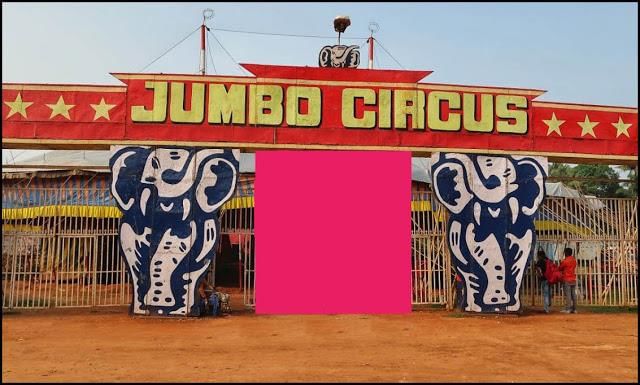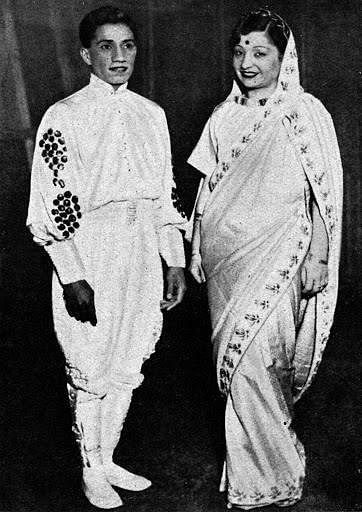Nitin Singhania Summary: Indian Circus | Nitin Singhania: Indian Art & Culture (Summary & Tests) - UPSC PDF Download
| Table of contents |

|
| Introduction |

|
| The Great Indian Circus |

|
| Keeleri Kunhikannan |

|
| Major Circus Companies in India |

|
| Circus: A marginal Industry |

|
| Possible Remedies |

|
Introduction
- The circus tradition in India dates back to the late nineteenth century—although India has of course a much more ancient tradition of traveling entertainers, comparable and parallel to those of Asia and Europe, and who often cross-pollinated with them.
- But the first Indian circus, according to the definition of the art form created by Philip Astley in 1770, didn’t appear until 1880.

The Great Indian Circus
- The first modern Indian circus was created by Vishnupant Chatre, an accomplished equestrian, and singer.
- Chatre was born in the village of Ankakhop (now part of the city of Sangli), in the province of Maharashtra, southeast of Bombay (the present Mumbai).
 Vishnupant Chatre
Vishnupant Chatre - Chatre was in charge of the stables of the Rajah of Kurduwadi, where he occasionally performed "feats of horsemanship"—in the tradition of old English riding masters such as Philip Astley.
- As legend has it, Chatre and the Rajah went to see a performance of the Royal Italian Circus of Giuseppe Chiarini in Bombay. The peripatetic Italian director (whose company was generally based in North America) was on one of its many world tours, and visited Bombay for the first time in 1774.
- Chiarini was a remarkable equestrian, and Chatre was duly impressed by his performance, and also by his show.
- During a conversation with Chatre and the Rajah, Chiarini bluntly stated that India was not ready to have a circus of its own and that it would take at least ten years before it could happen; Chatre was piqued.
- Thus Vishnupant Chatre decided to organize his own circus, of which he would be the star equestrian, and his wife would become a trapeze artist and an animal trainer. He probably used some of his pupils in the equestrian department as well.
- The first performance of Chatre’s Great Indian Circus was held on March 20, 1880 in the presence of a selected audience—among which was the Rajah of Kurduwadi, who may have helped him in starting his venture.
- Following the model of Chiarini, Chatre’s Great Indian Circus went on to travel extensively, first in the vast regions of North India, then further south, to the large east-coast city of Madras (today’s Chennai), and down to the Island of Ceylon (today’s Sri Lanka).
- In 1884, Chatre embarked in a tour of Southeast Asia, and, according to Indian circus lore, he then crossed the ocean to conquer the United States. But here, Chatre had badly overestimated his powers: He was indeed unable to measure up to the giant American circuses, neither in size nor in quality, and he returned to India in defeat.
Keeleri Kunhikannan
 Keeleri Kunhikannan
Keeleri Kunhikannan
- Back in India, Chatre continued his travels. When his circus visited the city of Thalassery (Tellicherry), on the Malabar Coast in the Indian state of Kerala (South West of India), he met Keeleri Kunhikannan (1858-1939), a martial arts teacher, who also taught gymnastics in Hermann Gundert’s Basel Evangelical Mission School
- Thus Chatre asked Kunhikannan, who showed a keen interest in the circus, to train acrobats for his Great Indian Circus—which Kunhikannan began to do in 1888 at a kalari (Indian martial-arts facility) in the village of Pulambil.
- In 1901, Kunhikannan opened a bona-fide circus school in Chirakkara, a village near the city of Kollam. In 1904, one of Kunhikannan’s students, Pariyali Kannan, created his own company, the Grand Malabar Circus, whose life lasted only two years.
- But this was only the first of several circuses emanating from the Chirakkara’s circus school, and soon, Kerala would be known as the Cradle of the Indian Circus.
- Over the years, Chirakkara's school gave birth to such companies as the Whiteway Circus (created in 1922 by Kunhikannan’s nephew, K. N. Kunhikannan), the Great Rayman Circus (created in 1924 by another disciple of Kunhikannan, Kallan Gopalan), the Great Lion Circus (also founded by K. N. Kunhikannan), the Fairy Circus, the Eastern Circus, the Oriental Circus, the Gemini Circus, and the Great Bombay Circus.
- To these, one must add the Kamala Three Ring Circus of K. Damodaran, who had begun his career traveling from village to village with a small two-pole tent in the early 1930s, before ending with a giant American-style six-pole, three-ring circus, the very first—and only one—of its kind in Asia.
The Chirakkara’s circus school didn’t train only future circus entrepreneurs: Many of Kunhikannan's pupils became circus stars in India, and sometimes internationally.
The most famous of them is perhaps Kannan Bombayo, the legendary ropedancer, who graduated from Kunhikannan’s school in 1910, was a star performer in the United States in the 1930s, and was subsequently featured in several major European circuses.
After Kunhikannan’s death in 1939, one of his disciples, M. K. Raman created the Keeleri Kunhikannan Teacher Memorial Circus and Gymnastic Training Centre, still in Chirakkara, and the tradition established by Kunhikannan has continued to this day. (In 2008, the Indian government announced that a Circus Academy would be created in Thalassery in Kunhikannan’s memory.)
 Kannan Bombayo on left
Kannan Bombayo on left- After Kunhikannan’s death (1939), his student M. K. Raman continued his legacy.
- 2010, the Government of Kerala started a Circus Academy in Thalassery in honor of Keeleri Kunhikannan, who has been conferred the epithet of ‘The father of Indian Circus’.
Major Circus Companies in India
- Indian circus companies failed to compete with American & European competitors but remained a major source of entertainment till late 1990s.
- Major Indian circuses are:
1. Three Ring Circus Three Ring Circus(i) Started as a two-pole circus by K. Damodaran in the 1930s.
Three Ring Circus(i) Started as a two-pole circus by K. Damodaran in the 1930s.
(ii) Gained popularity in South India.
(iii) Later became first & only six-pole three-ring circus of Asia.
2. Great Royal Circus (i) One of the oldest circus troupes in India.
(i) One of the oldest circus troupes in India.
(ii) Started as Madhuskar’s Circus in 1909. Later- taken over by N.R. Walawalker & renamed as Great Royal Circus.
(iii) Toured successfully through Africa, Middle East & South-East Asia.
3. Great Bombay Circus The Great Bombay Circus(i) Started in 1920 by Baburao Kadam.
The Great Bombay Circus(i) Started in 1920 by Baburao Kadam.
(ii) Initially known as Grand Bombay Circus.
(iii) 1947, K. M. Kunhikannan, nephew of Keeleri merged his circus company with Grand Bombay Circus & renamed it as Great Bombay Circus.
(iv) Became one of the largest circus companies of India, with a troupe comprising of 300 performers & 60 animals.
4. Gemini Circus (i) Came into existence at Bilimora in Gujarat (1951).
(i) Came into existence at Bilimora in Gujarat (1951).
(ii) Helmed by M. V. Shankaran, an ex-army man, who became popular as Gemini Shankarettan.
(iii) 1964, it became the first Indian circus to attend International Circus Festival in USSR.
(iv) Held shows at Moscow, Sochi and Yalta.
(v) Was the backdrop of many Indian movies like Raj Kapoor's Mera Naam Joker.
5. Jumbo Circus (i) “The Pride of India”
(i) “The Pride of India”
(ii) Largest Indian circus of modem times.
(iii) Started in Bihar (1977).
(iv) It was later acquired by the Shankaran family and included Russian acrobats & performers.
➢ Damoo Dhotre
 Damoo Dhotre(i) One of the most popular Indian ringmasters of all time.
Damoo Dhotre(i) One of the most popular Indian ringmasters of all time.
(ii) Bom in Pune in 1902, he joined Isako’s Russian Circus as a proprietor.
(iii) In 1939, he moved to France with Bertram Mills Circus & then to the world-famous Ringling Brothers and Barnum and Bailey Circus in the USA.
(iv) Their show was known as “The Greatest Show on Earth.”
(v) Later served in the US Army from 1943 to 1946.
(vi) Known as “Wild Animal man” & was granted US citizenship in 1960. (vii) Returned to Pune after serving Circus Industry for 40 years & died in 1973.
Circus: A marginal Industry
- Since the late 90s, the circus industry is declining due to a variety of reasons.
- 300 Indian circuses in 1990 came down to just 30 in 2017.
➢ Reasons for the decline
(i) Trade is kept as a guarded secret by Indian circus companies & have made it a hereditary affair so good managers don’t enter the circus business.
(ii) Indian circus companies feel that circus acrobatics require intensive training from childhood.
(iii) Supreme Court’s ban on hiring children below the age of 14 in 2011, limited the resource pool of circus companies.
(iv) Government of India banned the use of wild animals for entertainment in 1997, which decreased the attraction of the audience.
(v) Circus- seen as a dangerous profession. So, families are unwilling to let their children choose it as a viable professional career.
(vi) Access to world-class gymnastics & other forms of entertainment, interest in traditional Indian circus, was lost.
Possible Remedies
- Indian Circus Academy at Thalassery in 2010 on the verge of closure due to less number of trainees & financial constraints.
- Possible remedies for revival:
(i) Increased emphasis on safety regulations & strict enforcement of the same would improve perception of circus as a career opportunity.
(ii) Government protection for the circus performers and companies.
(iii) Security and compensation for artists after retirement should be provided.
(iv) Presently circuses are under the ambit of the Department of Sports and Youth Affairs. It should be brought under the Ministry of Culture for its revival.
|
19 videos|43 docs|26 tests
|
FAQs on Nitin Singhania Summary: Indian Circus - Nitin Singhania: Indian Art & Culture (Summary & Tests) - UPSC
| 1. What is the Great Indian Circus? |  |
| 2. Who is Keeleri Kunhikannan? |  |
| 3. What are the major circus companies in India? |  |
| 4. Why is the circus industry considered a marginal industry? |  |
| 5. What are some possible remedies for the challenges faced by the circus industry? |  |
|
19 videos|43 docs|26 tests
|

|
Explore Courses for UPSC exam
|

|





















